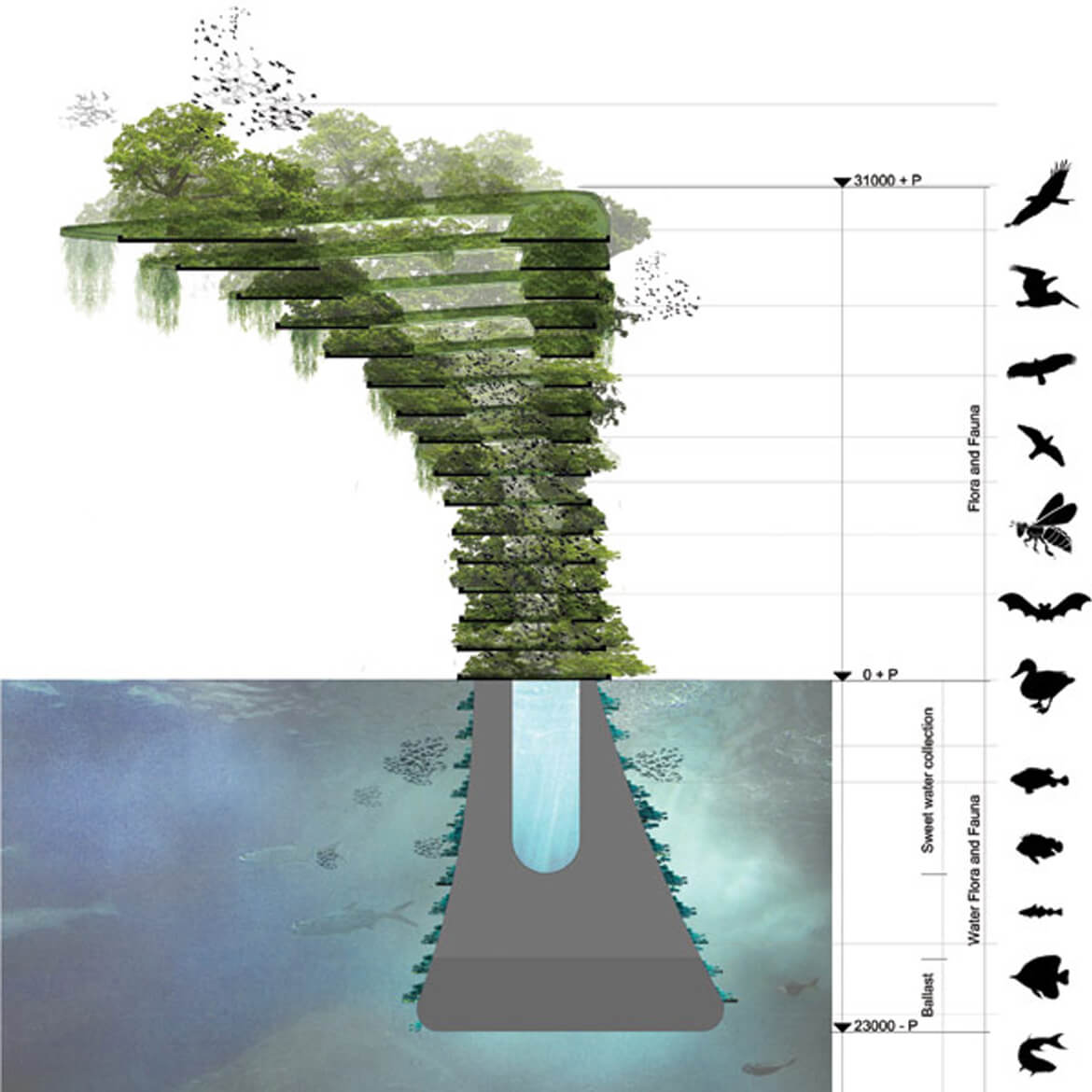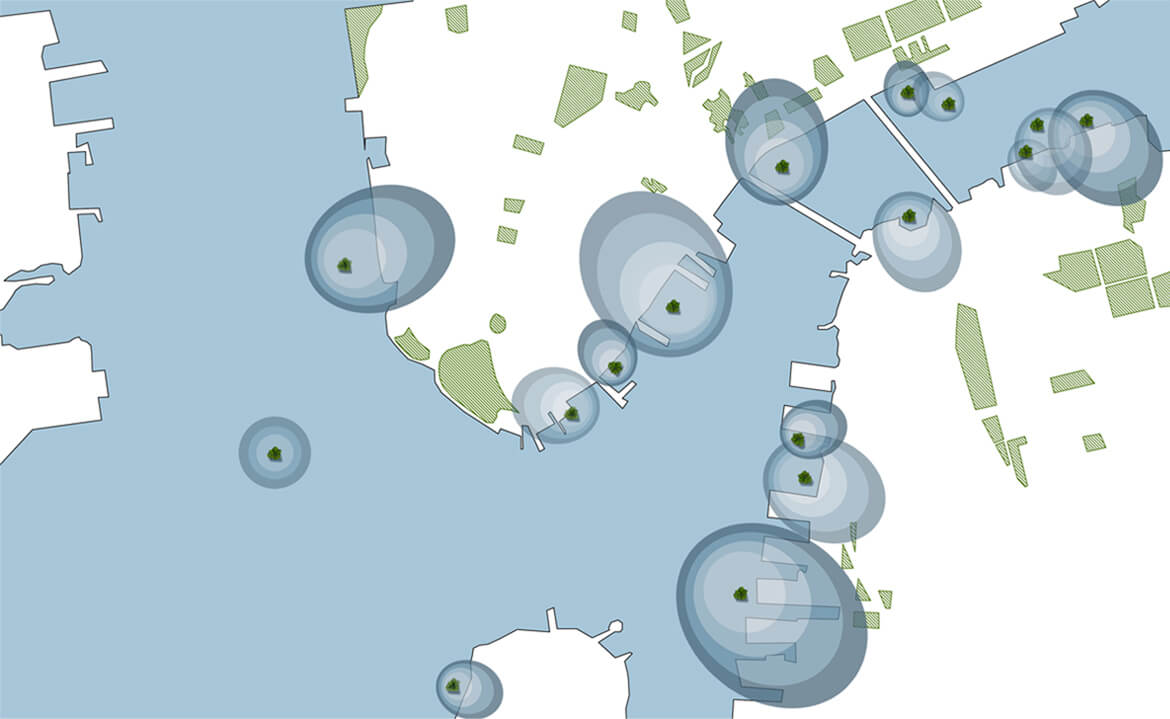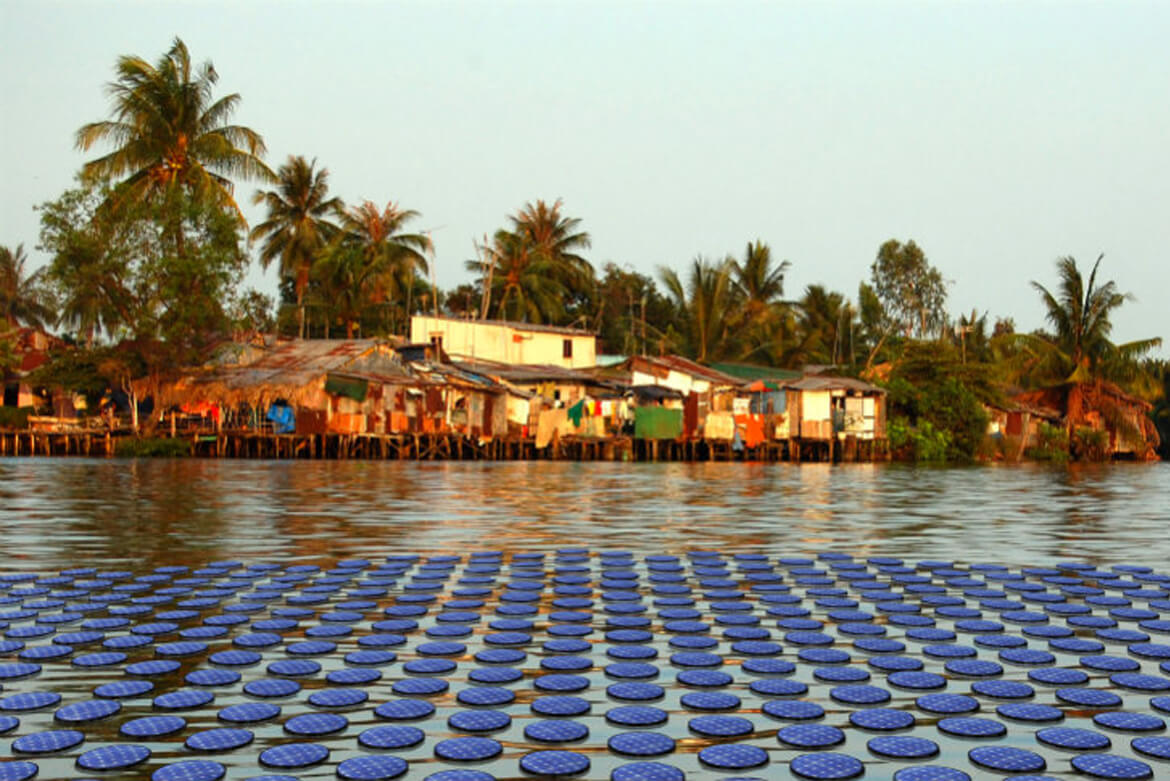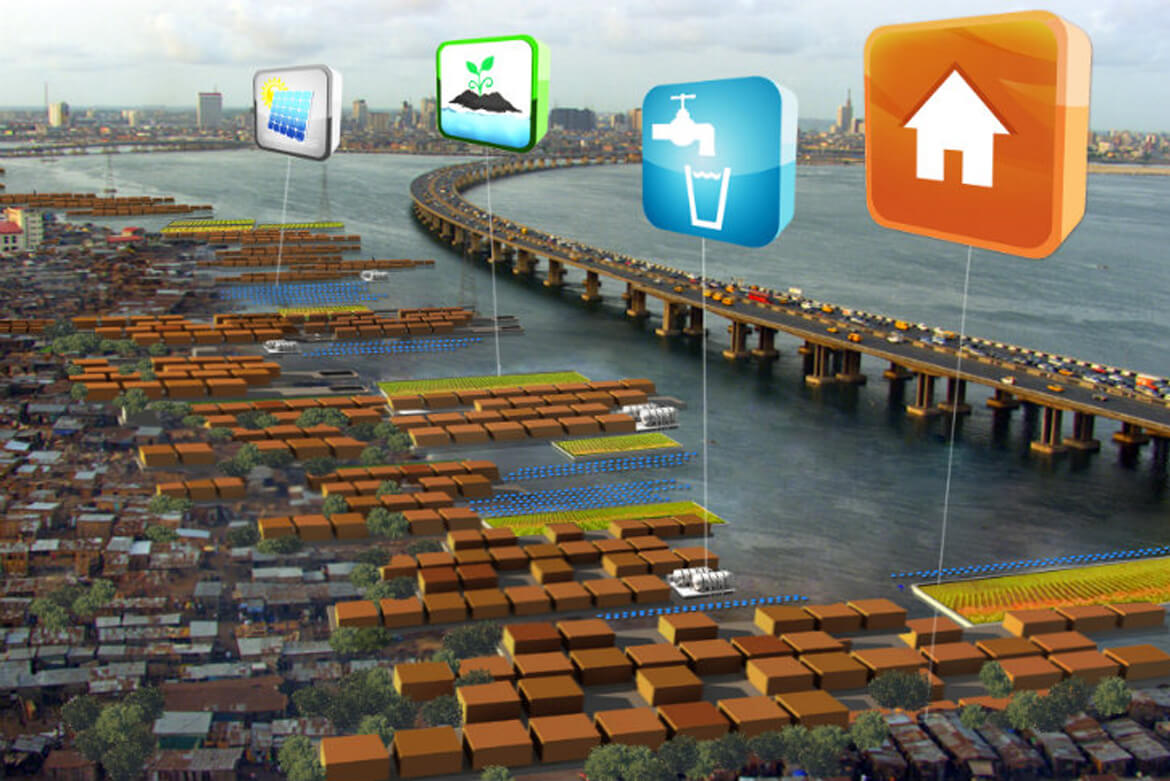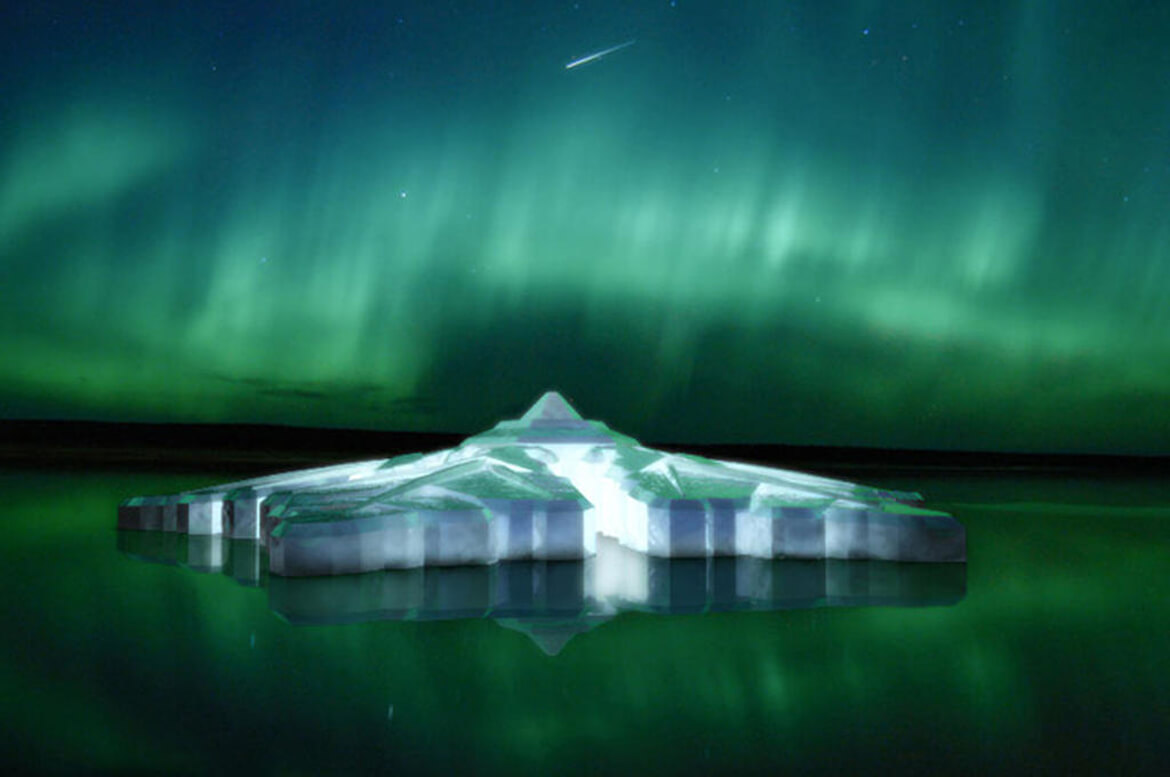Ciudades Anfibias
By Beatriz Portinari
CLUB + RENFE

Los arquitectos del futuro proponen una Atlántida biososteniblecomo respuesta al cambio climático y la utopía de una colonización oceánica.
“El mar no pErtEnEcE a los déspotas. En su superficie, aún pueden ejercer sus inicuos derechos, pelearse, devorarse y transportar todos los horrores terrestres, pero a treinta pies de profundidad, su poder
cesa. ¡Ah, señor, viva usted en el seno de los mares! ¡Solo ahí existe la independencia! ¡Ahí no reconozco señor alguno! ¡Allí soy libre!”. Con estas palabras, Julio Verne convirtió al capitán Nemo y su Nautilus en los pioneros de la llamada “colonización oceánica”, en 1870. Casi 200 años después de 20.000 leguas de viaje submarino, ingenieros y arquitectos ofrecen propuestas viables que van desde hoteles flotantes o flotels a cruceros-residencia para millonarios como The World y finalmente la utopía social y política de las naciones semi-sumergibles que propone el Seasteading Institute.
Pero, ¿por qué querría el hombre vivir en futuristas ciudades acuáticas?
Quizá por placer, por evadir impuestos en aguas internacionales o por pura necesidad medioambiental. Según los expertos en cambio climático y el Informe España: hacia un clima extremo, publicado por Greenpeace en 2014, se espera que a finales del siglo XXI la subida del nivel del mar por el deshielo del Ártico provoque una catástrofe climática y humanitaria que afectará al uno por ciento del territorio de Egipto, el 7% de Países Bajos, el 17% de Bangladesh y hasta el 80% de las Maldivas. En España, las mediciones indican que “durante la segunda mitad del siglo XXI, hasta 202 hectáreas de terreno se encontrarán en riesgo de inundación en la costa vasca. De esta extensión, la mitad corresponde a terrenos urbanizados, tanto zonas industriales como residenciales”. El peligro es real. Las estimaciones más pesimistas dicen que en 2030 habrá 50 millones de refugiados climáticos en el planeta, que ascenderían a 200 millones en el año 2050. ¿Qué hacer con esta población sin tierra? Más allá de previsiones, la evidencia está en el archipiélago de Kiribati, al noreste de Australia, donde 100.000 habitantes buscan territorio para trasladar todo un país porque el suyo ha comenzado a desaparecer bajo el mar. El gobierno de Kiribati ha comprado terreno en las islas Fiji para instalar a su población e incluso se ha planteado los diseños anfibios de uno de los arquitectos más preocupados por el medio ambiente, Vincent Callebaut, autor de los prototipos acuáticos Lilypad, Physalia y el más reciente Aequorea.
‘aRQuibiÓTica’ conTRa El cambio climáTico
“La anticipación urbana es fundamental para crear la ciudad del mañana, que considero imprescindible en la transición energética. Lo que llamo ‘arquibiótica’ es la solución
biotecnológica de la arquitectura a la crisis ambiental que sufrimos. Me inspiro en el biomorfismo, el biomimetismo y
la biónica, donde la ingeniería puede repetir esquemas de la naturaleza y aprovechar las nuevas tecnologías de comunicación”, explica Callebaut, a quien el Ayuntamiento de París
acaba de encargar el rediseño de la ciudad. De momento, sus audaces prototipos todavía no han encontrado océano donde iniciar la revolución verde.
Quien sí ha comenzado la construcción real de un atolón artificial para salvar a su población del mar es el Gobierno de las islas Maldivas, que ha firmado una alianza comercial con la empresa holandesa Dutch Docklands, experta en ganar terreno al agua. Si el entorno paradisíaco de las Maldivas va a desaparecer bajo el mar, nada mejor que empezar a construir una réplica flotante para mantener el turismo. Para ello se ha encargado el proyecto The 5 Lagoons al estudio de arquitectura Waterstudio, que dirige Koen Olthius, considerado “uno de los 100 eco-arquitectos que cambiarán el mundo” y que apuesta por el paso de las ciudades verdes a las ciudades azules sobre el agua. “No debemos tener miedo al posible aumento del nivel del mar, sino verlo como una oportunidad para mejorar nuestras ciudades. Si la costa española se puede ver afectada, debería empezar hoy mismo a considerar soluciones. Estas plataformas flotantes deberían ser eco-sostenibles, más duraderas y flexibles”, cuenta Olthius. El arquitecto va más allá e imagina “bellos parques en el agua, dinámicos, capaces de cambiar de forma y función en cada estación; el turismo ha sido siempre muy importante en la economía española y creo que estas extensiones flotantes podrían atraer más turistas.
Podría aportar al mismo tiempo seguridad y prosperidad a la costa. La tecnología está disponible, sólo sería necesario que fuera económicamente viable”.
El Seasteading Institute, creado en 2008 con importantes inversores como Peter Thiel, fundador de PayPal, va más allá y propone ciudades-estado independientes en aguas internacionales. Sin embargo, su utópico proyecto Floating City aún no ha visto la luz. “Técnicamente las ciudades anfibias son viables, pero deberían responder a una necesidad económica, legal y política real porque de lo contrario el proyecto no es rentable. Si tienes una plataforma que no pertenece a ningún país, no puedes defenderte de ataques piratas, por ejemplo. Para el problema del cambio climático existen soluciones más baratas como se ha visto con el relleno de tierra que está haciendo Singapur en su costa”, advierte el Ingeniero Naval y Oceánico, Miguel Lamas, experto en plataformas flotantes y antiguo colaborador del Seasteading Institute. En su tesis Establecimiento de comunidades autónomas en alta mar: opciones presentes y evolución futura hace un análisis realista de los posibles escenarios. Aunque estas comunidades en alta mar serían beneficiosas porque fomentarían el uso de las energías renovables de origen marino y la protección del hábitat oceánico, hoy por hoy no existe economía ni sociedad que respalde a corto plazo un costoso proyecto como las Ciudades Flotantes autónomas. Parece que la utopía de la colonización oceánica tendrá que esperar.
AquaTecture, Buildings and cities designed to live and work with water
By Robert Barker & Richard Coutts
RIBA Publishing
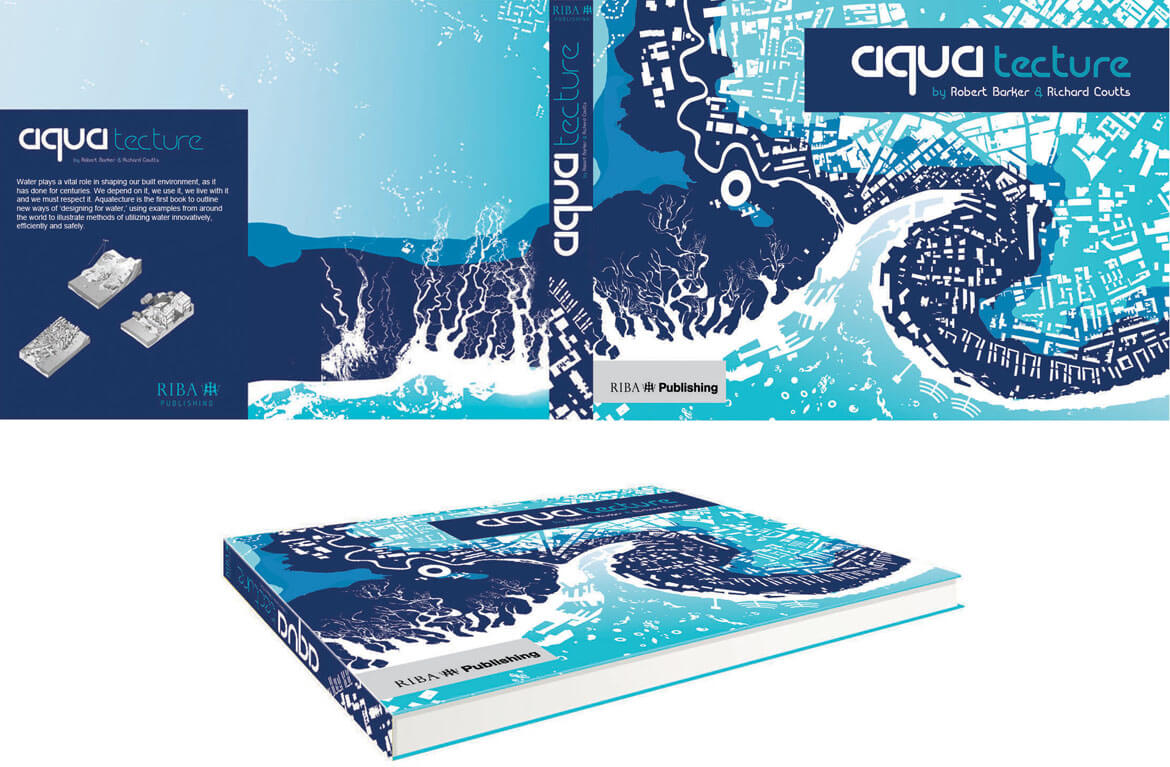
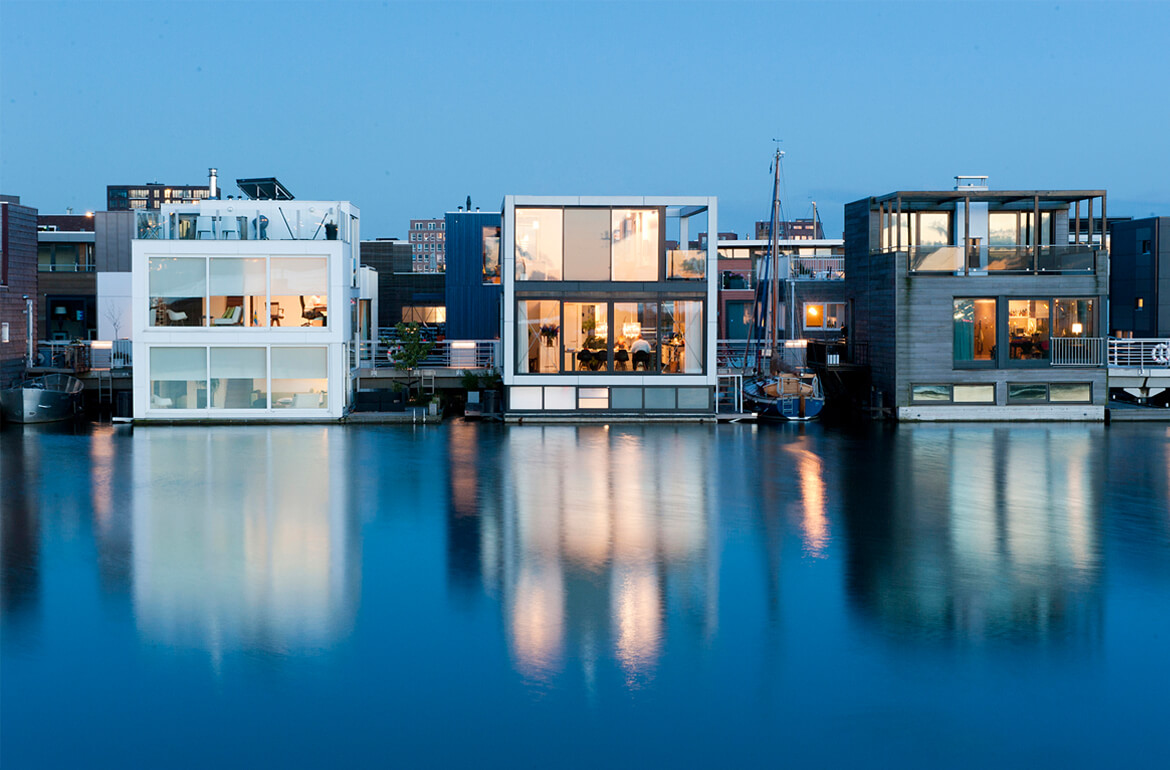
Water plays a vital role in shaping our built environment, as it has done for centuries. We depend on it, we use it, we live with it and we must respect it. Aquatecture is the first book to outline new ways of ‘designing for water,’ using examples from around the world to illustrate methods of utilizing water innovatively, efficiently and safely.
The first part of the book explores the historical relationship between water and architecture, examining how cities and civilisations have been drawn to water and have attempted to control it. The chapters go on to assess how this relationship has changed over time, and introduce readers to a range of brand new techniques that will revolutionise the way we think about water, design and urban planning. Solutions such as amphibious housing, wet-proof buildings, zero carbon development, rain gardens, flood storage and new methods of waterfront design are discussed and their effectiveness assessed.
Full colour illustrations and international case studies are used throughout the book to bring these new theories to life; practical, technical advice sits alongside truly ground-breaking and ambitious ideas for the future. This book is an ideal reference tool for all architects, urban designers, planners and sustainability experts who have an interest in creating a beautiful, sustainable, intelligent and pleasurable built environment on land, in water and with water.
Nederlandse golfbreker wekt energie op
By Michiel de Vries
RTL Nieuws
December.23.2015
Een Nederlands architectenbureau heeft een ontwerp gemaakt voor een golfbreker aan de oostkust van de Verenigde Staten. Bijzonder: het bouwwerk wekt ook energie op.
De drijvende golfbreker bestaat uit een reeks cilinders van bijna een meter in doorsnee. De elektriciteit wordt opgewekt doordat deze cilinders meedraaien met de stroming en de golven. Het bouwwerk wordt ‘the Parthenon project’ genoemd, omdat de pijpen erg lijken op de zuilen van het Parthenon in Griekenland.
Het ontwerp van de golfbreker komt van de Waterstudio in Rijswijk, een architectenbureau dat zich al jaren specialiseert in drijvende structuren om zo creatief om te gaan met problemen rond de stijgende zeespiegel en overstromingen. Ze maken van alles: van watervilla’s tot drijvende cruiseterminals.
Orkaan Sandy
Het bouwwerk maakt onderdeel uit van een groter project voor het veilig maken van New York en omliggende stedelijke gebieden. Aanleiding is orkaan Sandy, die in 2012 voor tientallen miljarden schade veroorzaakte aan de oostkust van de Verenigde Staten. Veel Nederlandse bedrijven en kennis wordt hier nu ingezet om de kust te verstevigen. Nederlandse ingenieursbedrijven, zoals Royal Haskoning en Arcadis, hopen een goede boterham te kunnen verdienen aan de infrastructuurplannen, schreef RTL Nieuws-correspondent Erik Mouthaan al eerder.
“Het momentum voor dit soort innovaties is absoluut nu daar aanwezig”, zegt ook Koen Olthuis van Waterstudio tegen RTLZ Toekomstmakers.
Het bureau paste het concept van the Parthenon project toe bij een haven op de Hudson-rivier bij New York (zie inzet hierboven). De golven zijn daar zó hevig dat een sterke maar flexibele zeewering nodig is om de boten te beschermen. De cilinders van het Parthenon project zijn flexibel: ze zijn met water gevuld en draaien langzaam, de een met de klok mee en de andere tegen de klok in. De energie wordt vastgelegd in een betonnen bak in het drijvende platform.
Olthuis laat aan RTL Z Toekomstmakers weten in gesprek te zijn met de Amerikaanse staat New Jersey en een havenontwikkelaar. Het ontwerp gaat hierna de ‘detailed engineering-fase’ in. De verwachting is dat een gedeelte van het prototype in het derde kwartaal van 2016 getest kan worden. “Als alles volgens plan gaat en de vergunningen er op tijd zijn, dan willen we in 2017 de golfbreker actief hebben.”
Waterstudio’s floating sea wall harvests blue energy from crashing water
By Tafline Laylin
Inhabitat
December.2015
Certain world leaders might be dragging their feet on addressing climate change, but in the meantime, Koen Olthuis and the rest of the Waterstudio crew are working on solutions that we can use today. The Blue energy floating sea wall is a floating breakwater that doubles as an energy generator. Called The Parthenon, the floating breakwater not only stems the crash of water pushing into a harbor, but harvests the tremendous energy a wall of water like that can generate.
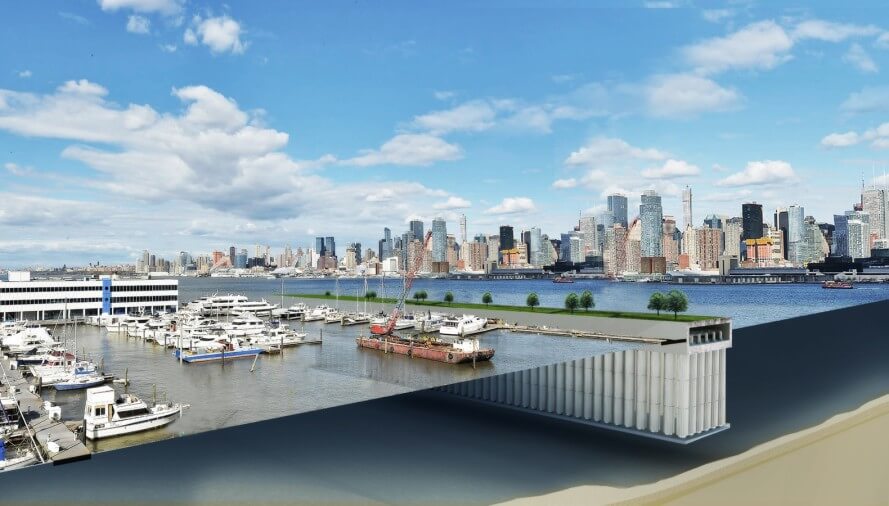
Waterstudio used the Hudson River to illustrate their new design’s function. “In a harbour on the Hudson river in New York the wave conditions are so strong that a sea wall must protect its boats. The strong current in the river is constantly attacking it and water is pushing itself against and through the fixed wall, which results in more corrosion of the sea wall every year.”
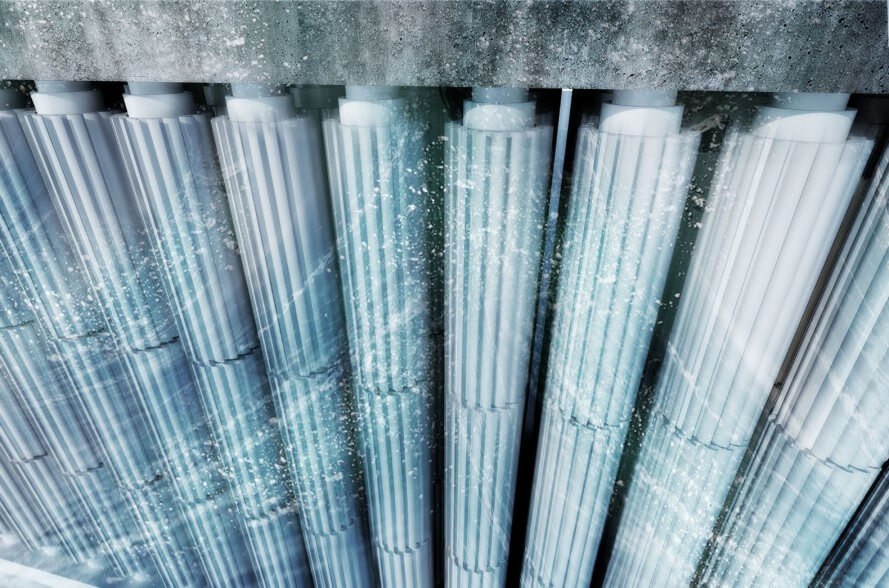
The floating sea wall acts as a permeable breakwater that converts the wave power into electrical energy while reducing the waves’ impact on the harbor at the same time. “The floating breakwater lives with the force of the river instead of fighting it,” they told Inhabitat in an email.
Related: Aquatect Koen Olthuis tells Inhabitat how to embrace rising sea levels
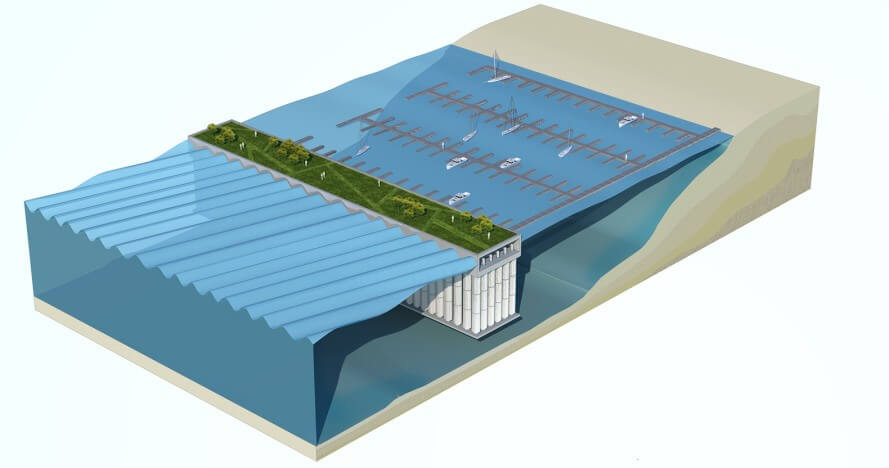
The columns of the sea wall are comprised of 3-foot cylinders that rotate – both clockwise and counter clockwise – at low speed. The energy created by this rotation is then captured in a concrete box inside the floating platform. The cylinders are filled with water to give the structure flexibility without affecting in any way the efficacy of the wall in reducing the wave’s impact on the harbor. The whole thing is then anchored to the riverbed, and the top can double as an urban green space or boulevard.
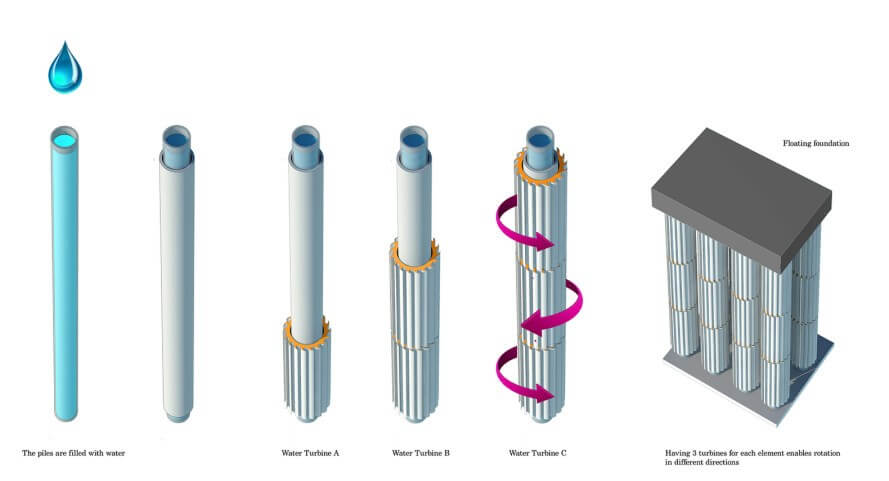
“The Parthenon blue energy sea wall resembles the column structure of the famous ancient temple in Greece,” according to Waterstudio, “but divers see it as a part of the sunken city of Atlantis.”
The Floating Dutchman
By Kerstin Schweighöfer
FUTURE PERFECT
December 2015
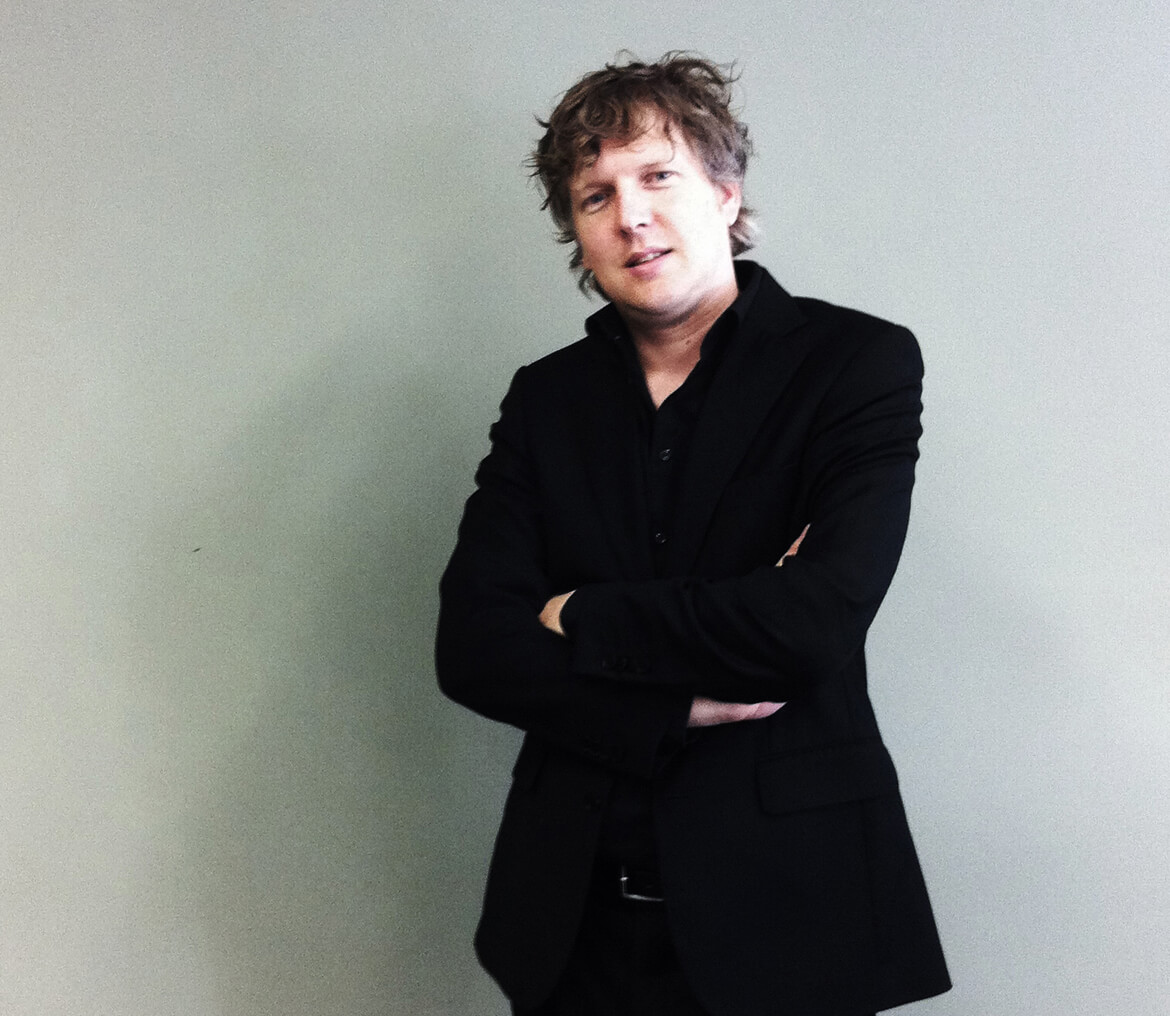
Koen Olthuis | © Architect Koen Olthuis, Waterstudio.NL

The Citadel is a floating apartment complex near Naaldwijk, Netherlands. | © Architect Koen Olthuis, Waterstudio.NL
THE FLOATING DUTCHMAN
In the tradition of his water-taming nation, Dutchman Koen Olthuis designs floating islands to dwell and live on – not least because climate change calls for new solutions in architecture.
A vacation doesn’t get more wonderful than this: a white sandy beach, a green-blue, glistening sea and an exotic underwater world to thrill any snorkeling enthusiast. All you have to do to explore it is jump into the Indian Ocean from your personal jetty, because the elegant vacation villa where you’re staying is floating on the water. In a Maldivian lagoon, this dream is currently becoming a reality as the construction of 185 floating vacation homes is currently underway. They’re arranged in the shape of a giant flower on the water. Hence the name of the project: Ocean Flower.
It was designed by Koen Olthuis, a Dutch architect who is considered a pioneer of what is called Aqua Architecture: “I build exclusively on the water,” says the 44-year-old with a strawberry-blonde mop of curly hair. His buildings are made to withstand floods and climate change because everything Olthuis designs can adapt to the level of the sea. It is not by accident that his office in Rijswijk near The Hague bears the name waterstudio.nl.
Bracing for climate change, without leaving a trace
In order to make such bold projects as the Ocean Flower a reality, Olthuis partnered with a fellow Dutchman, project developer Paul van de Camp, to found the company Dutch Docklands. It buys water properties all over the world to use them as building sites. This opens up completely new perspectives – not only for densely populated cities or countries where building sites are in short supply and hence, expensive: “It also helps residents protect themselves from the consequences of climate change.”
There is a reason Dutch Docklands launched its first project in the Maldives. It’s not just to cater to the recreational interests of spoiled tourists: The 300,000 inhabitants of the island nation will soon literally be up to their necks in water, because 80 percent of the Maldives are located barely a metre above sea level. The government had already announced plans to buy to land elsewhere in order to survive. Until Olthuis and van de Camp assured them that this was quite unnecessary: “We made the President of the Maldives understand that climate refugees can be pioneers of climate management,” said Olthuis. They understood immediately.
The Ocean Flower is just the beginning: Four more lagoons with floating vacation lodges are to follow, as well as a floating conference centre and one of the world’s most spectacular golf courses that will spread over several man-made islands to be connected by underwater glass tunnels.
And all this can be done without leaving a trace in nature or inflicting any damage, for Dutch Docklands is committed to what it calls the scarless approach: “Our units can float anywhere on the water for 200 years, yet if the area is needed for some other purpose, they can just be hauled away,” Olthuis explains. They will be gone without a trace.
The Dutch know how to live with the water
It isn’t surprising that the pioneers of Aqua Architecture are Dutch: Like no other people, the nation at the mouth of the Rhine River has spent centuries learning to tame the water or to keep it in check with dikes, dams and levees. As the proverb goes: “God created the world – and the Dutch the Netherlands.”
Whether it is in New Orleans or in Bangladesh: The expertise of Dutch hydraulic engineers and architects is in high demand throughout the world – today more so than ever, thanks to climate change, which brings swelling rivers, rising sea levels and more catastrophic floods around the globe.
The Dutch have long recognized that building ever higher dams won’t be enough. Therefore, the former nemesis is instead given more space: Polders are being flooded, retention basins are being built, tributaries being carved out and filled-up canals dug free again.
The old seafaring nation now has even less residential land available. Yet the Dutch discovered that the flooded polders and artificial water basins offer more benefits than just a controlled channeling of excess water.
Trend and challenge of generation climate change
As a consequence, aqua living has since become a trend in the Netherlands; all over the country, people reside in what is called waterwoningen. Their foundation consists of a concrete tub filled with Styrofoam, which is considered unsinkable. To keep them in place, they are moored to poles with rings so they can easily adapt to rising sea levels. Electricity and water lines are connected via hoses and cables.
Olthuis has designed countless waterwoningen: transparent villas sitting elegantly on the water, such as in Aalsmeer, Zwolle, Leiden or Amsterdam, which received an entire floating neighborhood in 2012, the steigereiland. In Antwerp, Olthuis designed a floating boulevard on the Scheldt, in Paris he created a restaurant on the Seine. And in a polder between The Hague and Delft, he wants to build de Citadel, Europe’s first floating apartment complex on a foundation of 140 by 90 metres. “Technologically speaking, all of this is easy to do,” he stresses.
The technology developed and patented by Olthuis virtually eliminates size limits on foundations for waterwoningen. In other words, the foundation can be a platform large enough to accommodate entire blocks of houses, complete with yards and parking garages: “The larger an object, the more stable it is on the water,” the architect explains.
Olthuis is therefore convinced: The city of the future consists of floating platforms that can be moved around like floes of ice. “It will evolve one step at a time,” the bold Dutchman predicts: The next fifteen years will see churches, schools and sports fields move out onto the water, then in 50 years, we will have platforms as large as 200 by 200 metres, with houses, roads and parks – until a century from now, the city of the future will be a reality: a flexible delta-metropolis of floating elements. For Olthuis, this new type of urban design, this new flexibility is “the great challenge for the architects of the climate change generation.”
Nederlandse architect ontwerpt duurzame golfbreker
By Duurzaamheidsleven.nl
December.22.2015
Architect Koen Olthuis van architectenbureau Waterstudio heeft een duurzame golfbreker voor een haven aan de Hudson rivier in New York ontworpen. De dijk beschermt niet alleen de boten, maar genereert ook energie.
Golfbreker De Panthenon is ontworpen voor een haven aan de Hudson rivier waar de golven sterk zijn. Het design geeft de golfbreker een dubbelfunctie: door het water niet tegen te houden zoals een gewone golfbreker, maar het water door de muur te laten stromen ontstaat er de mogelijkheid om energie op te wekken. De opgewekte energie wordt opgeslagen in een betonnen box achter de pilaren.
De Panthenon is niet de eerste golfbreker die een dubbelfunctie heeft. Bij Denemarken is een hybride windmolen geplaatst door de Duitste start-up Nemos. Deze windmolen gebruikt naast wind ook golven om energie op te wekken. Dankzij drijvers die aan de windmolen verbonden zijn, kan er extra energie opgewekt worden.
Veel technieken die de stroming van het water gebruiken, liggen deels boven water. Net als de Panthenon ligt bij New Wave Technology, eveneens ontworpen door Teamwork Technology, het systeem volledig onderwater. De stroming van het water zorgt ervoor dat de drijvers onderwater energie genereren. Een eerdere versie van de New Wave Technology werd tot 2008 door het Nederlandse bedrijf Teamwork Technology getest in Portugal.
Floating Sea Wall Makes Energy from Rivers
By Samantha Joe
The Green Optimistic
December.10.2015
Waterstudio, led by Koen Olthuis, is a Dutch firm that explores solutions in urban planning and research as it relates to water. One of their concepts is a floating sea wall, named The Parthenon.
The Parthenon serves multiple purposes: it slows water as it pushes into a harbor, and harvests the energy that water generates.
The concept of the floating sea wall was illustrated using the Hudson River in New York, a 315-mile long river that runs through the eastern part of the state. With 39 percent
of the American population living on the shorelines of the country, harnessing water as an energy supply would be a strategic move.
In a harbor like one in the Hudson River, the waves are so strong that a sea wall protects the boats inside of it. The strong current continuously pushes water against and through this fixed wall, resulting in more and more damage of the wall.
With a floating sea wall like the one made by Waterstudio, not only with the wall work with the force of the current, it will use the water’s movement to generate electricity. Made up of many columns, they rotate at a low speed to create energy.
The cylinders are filled with water to ensure that there is a certain amount of flexibility in the structure without reducing the effectiveness in protecting the harbor. This energy is then contained in a box inside the floating platform. The entire structure is anchored to the riverbed, while the top can be utilized in different ways, such as a boulevard, a harbor extension, or for green space.

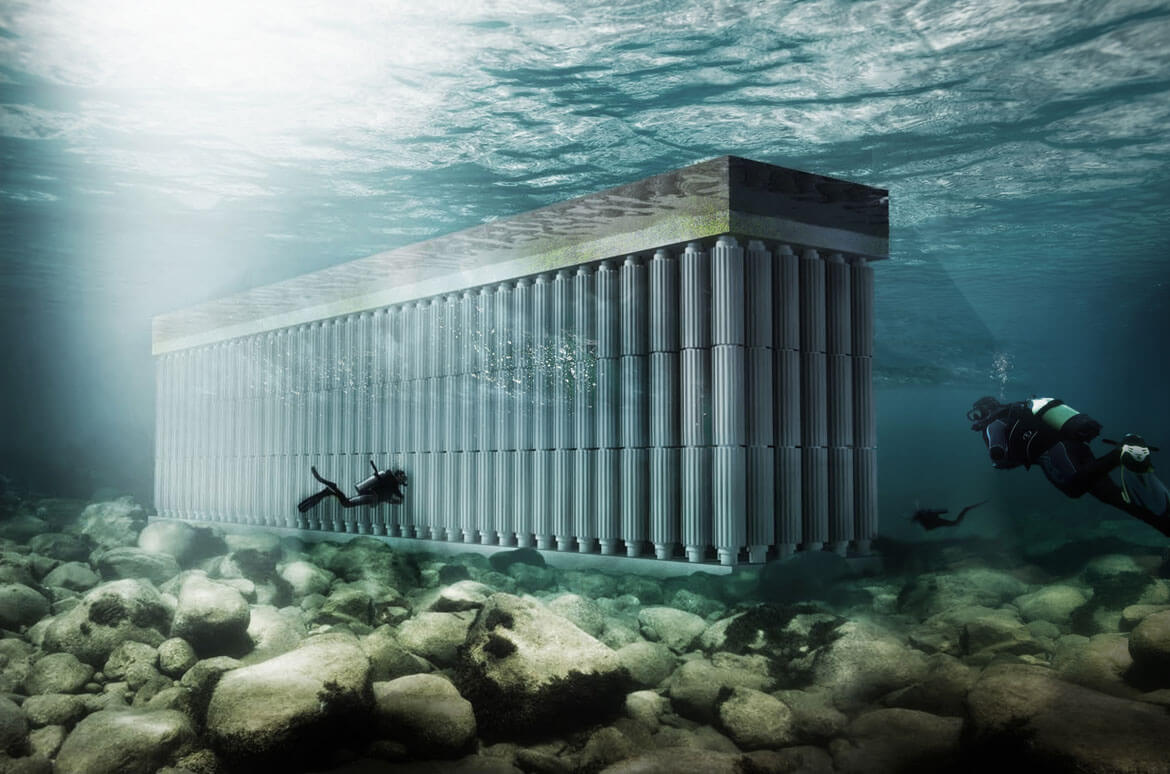

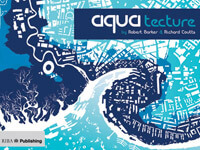

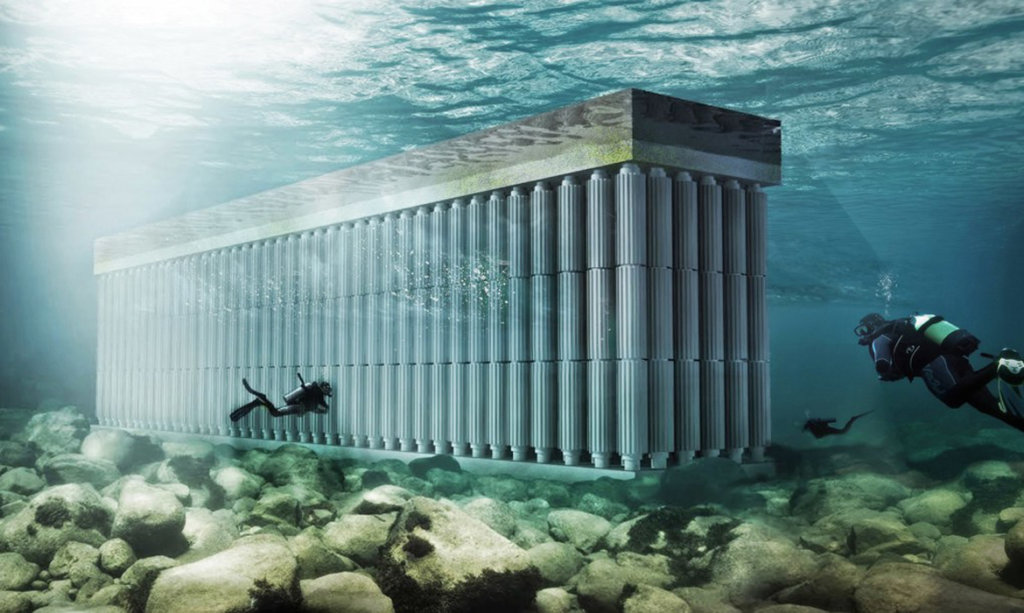
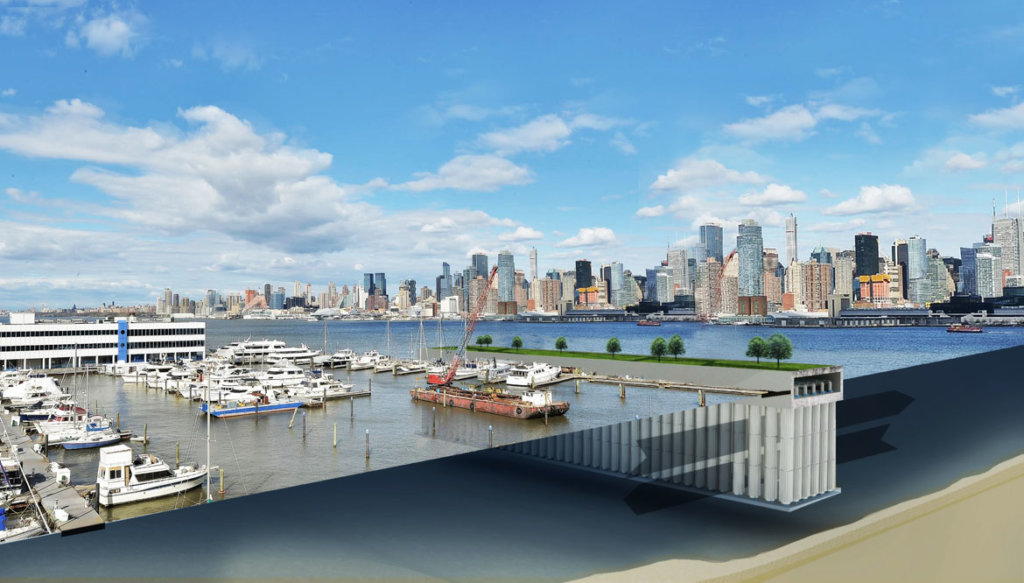

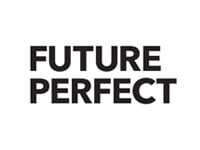



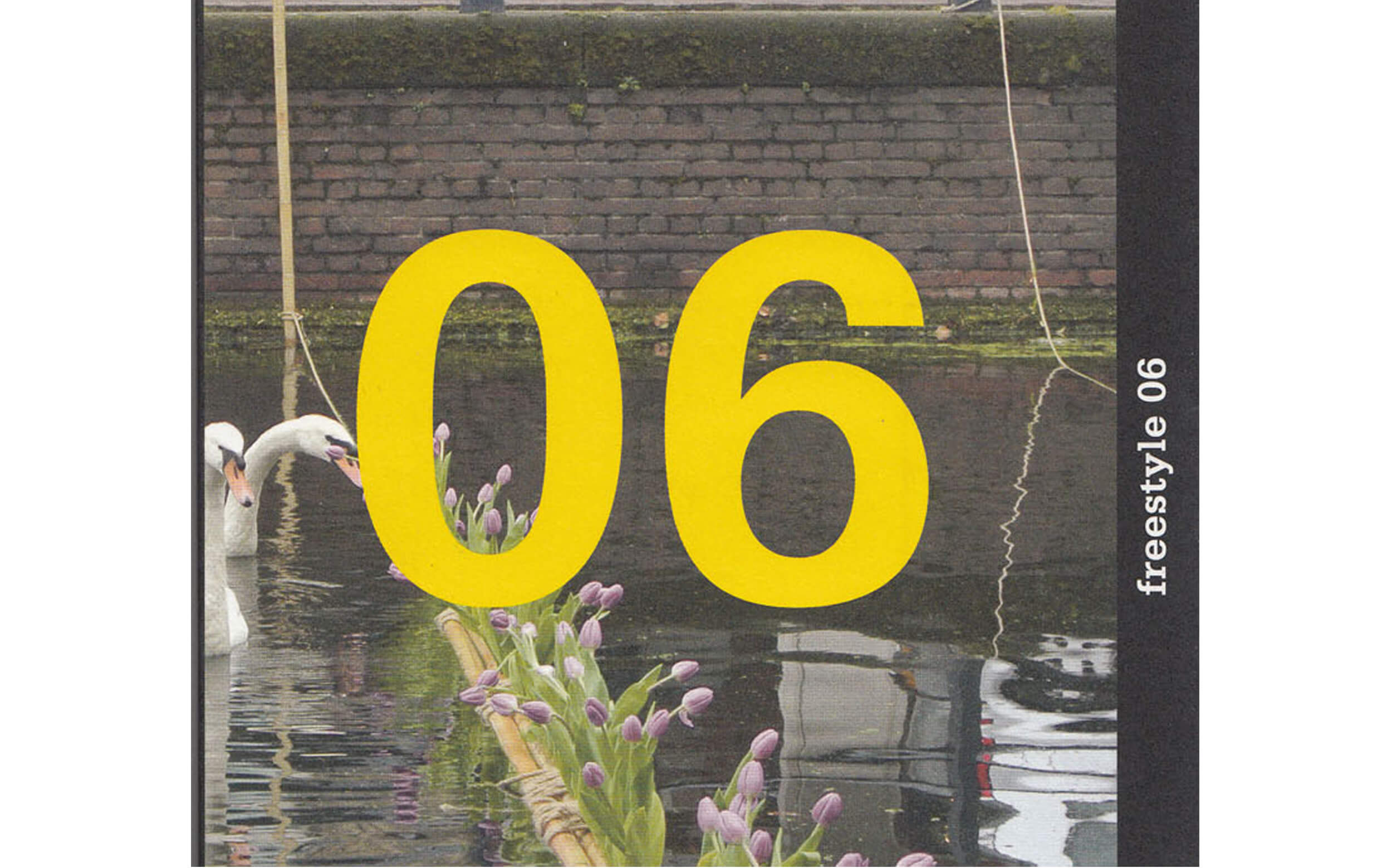
 By Tanja Lina
By Tanja Lina